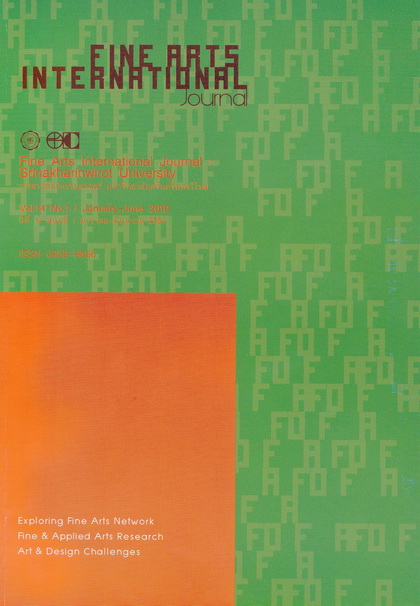Dance for the Hearing Impaired Children
Keywords:
Hearing impaired children, Dance performances, Emotional and Mental Capability DevelopmentAbstract
This thesis is a quasi-experimental research with an objective of designing and developing a form of dance arts for hearing impaired children so that their emotional and mental capability can be further improved and developed. The target group included in this thesis consists of 20 male and female hearing impaired high school students attending Year 10 to Year 12 of Setsatian School for the Deaf Under the Royal Patronage of His Royal Highness Crown Prince Maha Vajiralongkorn, who have the hearing levels ranging between 40-55 decibels. These students in the target group voluntarily chose to participate in the experiment themselves.
From the research, it showed that, prior to the experiment, 19 hearing impaired students from the target group had the Thai Happiness Indicator falling in the “Poor” category, meaning that 95 percent of students in the target group had a mental health level below people with normal hearing ranges. Only 1 student in the group had an indicator falling in the “Fair” category, showing an equivalence of 5 percent of targeted hearing impaired students who had a mental health considered to be comparatively the same as that of people with normal hearing ranges. However, after the experiment, all 20 students in the target group, an equivalence of a 100 percent, had their mental health level categorized as “Fair”. It was observed that all 20 hearing impaired students, an equivalence of 100 percent, demonstrated a very pleasant level of satisfaction responding to the aesthetic dance arts activities, the sign language with dance arts movement, the dance performance ‘Kaew Kalaya’, the sound-induced instruments activity of the Kuek Kong Peri dance performance, the rhythm learning and creation using a body’s parts activity of the Taree Leela dance performance, the movement and visual learning relation activity of the Kratop Mai dance performance and the dance arts participation activity. Furthermore, all 20 hearing impaired students showed a pleasant level of satisfaction towards the aesthetic dance arts activities participation as performers among themselves and as co-performers with other performers without hearing disability, whereas, only 89 percent of 20 hearing impaired students were pleasantly satisfied as audiences.






